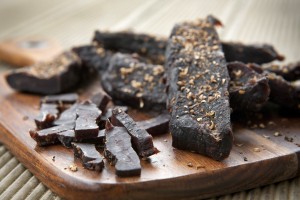 Yesterday’s announcement of the Red Meat PGP Collaboration Programme for Greater Farmer Profitability at a total investment of $65 million is fantastic news for the whole industry, says meat industry commentator Allan Barber. The key words are ‘collaboration’ and ‘farmer profitability’, he writes.
Yesterday’s announcement of the Red Meat PGP Collaboration Programme for Greater Farmer Profitability at a total investment of $65 million is fantastic news for the whole industry, says meat industry commentator Allan Barber. The key words are ‘collaboration’ and ‘farmer profitability’, he writes.
The first of these has usually been notable by its absence, while the second combination of words has only been evident at irregular intervals.
Half the funding will be made available from the Ministry for Primary Industries (MPI)’s Primary Growth partnership fund, while 30 percent will come from farmers through Beef & Lamb New Zealand Ltd (B+LNZ) and Meat Board reserves and the balance from six meat companies, two banks and Deloitte.
B+LNZ’s contribution is contingent on levy paying farmers voting in support of the proposal at its annual meeting on 8 March. Although nothing is ever certain, it would be a shock if this support wasn’t forthcoming, because the programme represents a significant step towards fulfilling the objectives of the Red Meat Sector Strategy conducted by Deloitte and completed nearly two years ago.
The aim of the programme is to lift the performance of all farmers to match that of the best performers which was identified in the strategy as the best way of improving industry profitability. There is a significant gap between the top and bottom performers in farming methods and profitability. If this gap can be closed the gains for the sector and New Zealand are enormous.
The participation of the six meat processors – AFFCO, Alliance, ANZCO, Blue Sky, Progressive Meats and Silver Fern Farms – is as meaningful as it is welcome. These are the key sheepmeat processors which is recognition that it is the sheep meat sector in particular where the greatest gains are to be made. However, the focus behind the farm gate shouldn’t obscure the fact that there are substantial gains to be made from greater collaboration in the market place.
A striking aspect of yesterday’s press releases by Ministry of Primary Industries, B+LNZ, Alliance and Silver Fern Farms (SFF) was the difference in tone between the statements by the two meat companies and the enthusiasm with which Beef & Lamb is greeting the opportunity.
The tone of SFF’s press release was less than enthusiastic, emphasising the need for a levy vote in support before the programme could begin and the care taken to ensure this programme did not cut across SFF’s Farm IQ programme which was the first project out of the blocks.
In spite of a first sentence which confirmed SFF’s support for the collaboration programme, the main impression from the statement was that the company was a somewhat unwilling participant and would be guided by the farmers’ decision. If this happened not to be supportive, I was left with the feeling SFF would not be particularly upset.
In comparison with Keith Cooper’s guarded support for the programme, Alliance chief executive Grant Cuff was positively euphoric, stating:
“This new coordinated collaborative initiative will enhance the knowledge and capability in the sheep and beef sector and help improve farm performance, productivity and profitability.
“New Zealand can make significant gains in its export earnings by ensuring all parts of the value chain collaborate so suppliers are using the best available farm and business management practice and tools.
“This initiative is an important step in the implementation of the Red Meat Sector Strategy. We’re supportive of any steps to lift the industry’s game and improve on-farm profitability.”
After my recent call for a sheep meat strategy, I am cheered by this progress. Admittedly, results won’t happen immediately, but it provides an investment over several years during which industry participants will work together for the collective good.
This must be one of the best possible outcomes for an industry which is noted more for its divisiveness than its potential to cooperate in the interest of a better future for all the parties.
Allan Barber is a meat industry commentator who writes a number of columns on the topics. He has his own blog Barber’s Meaty Issues.



